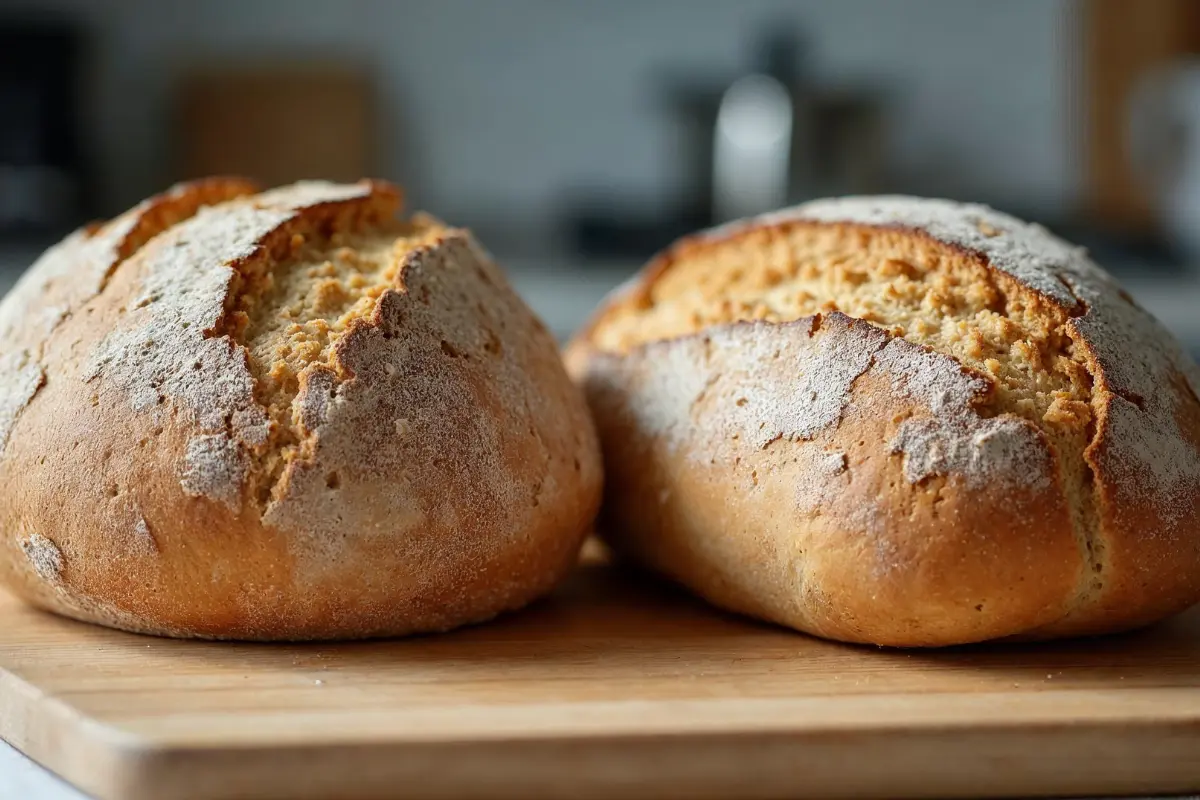Is Wholemeal the Same as Whole Wheat? Understanding the Differences and Health Benefits
When browsing the bread aisle or selecting flour for baking, you might ask yourself: Is wholemeal the same as whole wheat? While these terms are often used interchangeably, they are not identical. The key differences lie in processing, texture, and regional terminology. Understanding these variations can help you make informed choices about your diet and baking needs.
In this guide, we’ll explore the distinctions between wholemeal and whole wheat, their nutritional benefits, and how they impact your health. We’ll also provide tips on substituting one for the other and answer common questions to help you make the best choice for your meals.
Understanding Wholemeal and Whole Wheat
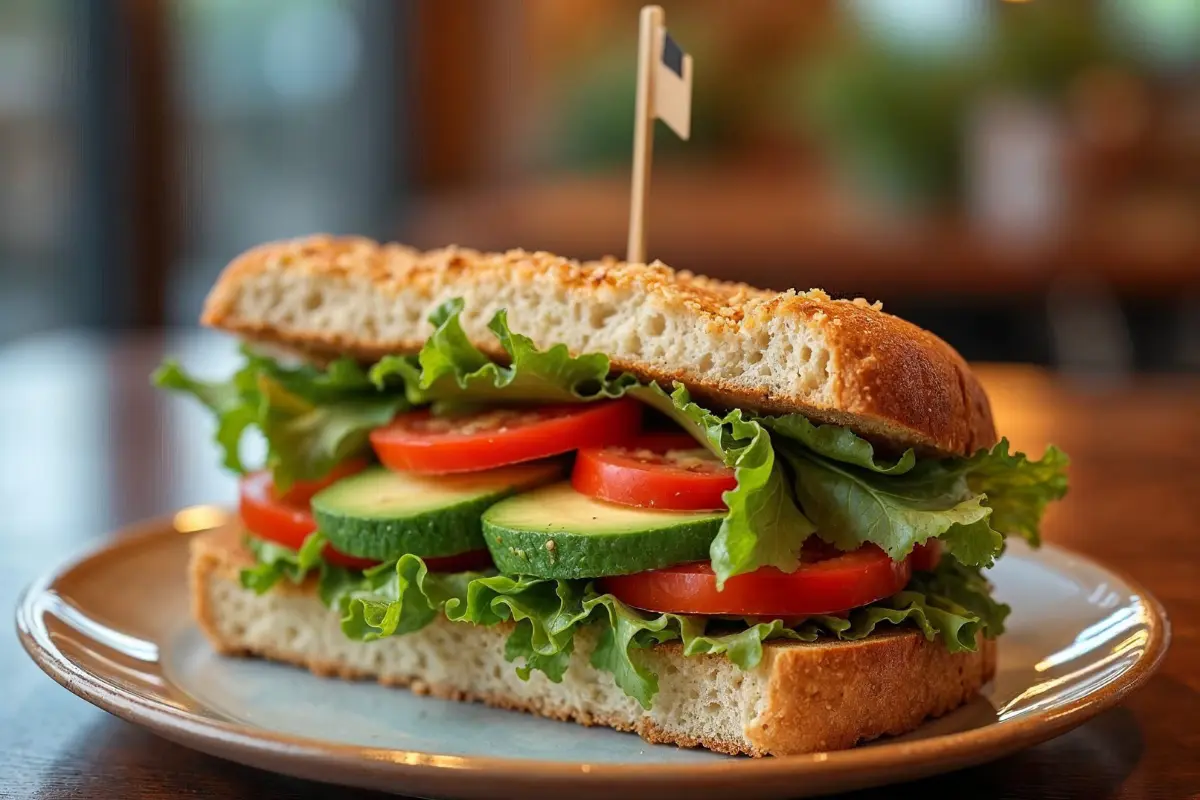
What Are Wholemeal and Whole Wheat?
Wholemeal and whole wheat are made from the same foundational ingredient: the wheat grain. However, they are processed differently:
- Wholemeal: Popular in the UK and Australia, wholemeal refers to flour made from the entire wheat grain that is finely ground. It retains all parts of the wheat kernel—bran, germ, and endosperm—making it rich in fiber and nutrients.
- Whole Wheat: Common in the US, whole wheat flour is also made from the entire wheat kernel but may undergo a process where the bran and germ are separated during milling and reintroduced.
How Are They Processed?
The main difference lies in texture:
- Wholemeal flour is finely ground, creating a denser product suitable for hearty bread.
- Whole wheat flour is slightly coarser, yielding a more versatile texture for various recipes.
The Key Differences Between Whole Wheat and Wholemeal
Processing Techniques
- Wholemeal Flour: Made by grinding the entire wheat kernel into a fine, uniform consistency. This process retains all nutrients and creates a denser product.
- Whole Wheat Flour: The bran and germ are sometimes separated and later recombined, allowing for better control over texture and flavor.
Texture and Appearance
- Wholemeal flour is darker and denser, making it ideal for rustic baking.
- Whole wheat flour is lighter and smoother, suited for both sweet and savory recipes.
Nutritional Comparison
- Both are nutrient-rich, containing fiber, vitamins, and minerals.
- Wholemeal flour may have a slightly higher fiber content due to its finer texture, which preserves more of the wheat grain’s natural components.
Wholemeal Flour in the US
What Is Wholemeal Flour Known As in the US?
In the US, “wholemeal flour” is equivalent to whole wheat flour, although the term “wholemeal” is rarely used. Other variations include:
- Graham Flour: A coarser version of whole wheat flour.
- Stone-Ground Flour: A traditional milling method retaining coarser textures.
- White Whole Wheat Flour: A lighter variety made from white wheat, offering a milder flavor.
Using Wholemeal Flour in American Recipes
Wholemeal flour can replace whole wheat flour in most recipes. Keep these tips in mind:
- Increase the liquid slightly to account for wholemeal’s higher absorption rate.
- Combine wholemeal with lighter flours for recipes requiring a lighter texture.
Recipe Ideas
- Wholemeal bread with seeds for added crunch.
- Banana muffins with wholemeal flour for a nutritious snack.
- Wholemeal pancakes paired with fresh berries.
Substituting Wholemeal for Whole Wheat
When Can You Substitute Wholemeal for Whole Wheat?
Wholemeal flour can replace whole wheat flour in most recipes, but adjustments may be needed:
- Add more liquid for moistness, as wholemeal absorbs more water.
- Combine wholemeal with lighter flours for better texture in cakes or muffins.
Tips for Successful Substitution
- Allow the dough or batter to rest for 10–15 minutes to hydrate the bran fully.
- Use additional leavening agents, like baking powder or yeast, for a better rise.
Best Recipes for Substitution
- Wholemeal pancakes or waffles for a hearty breakfast.
- Wholemeal pizza dough for a rustic, flavorful crust.
Wholemeal vs. Wholegrain: Which Is Healthier?
What Is Wholegrain?
Wholegrain refers to products made from any whole grain, including wheat, oats, barley, quinoa, and more. Unlike wholemeal, which focuses on finely ground wheat, wholegrain includes intact grains or minimally processed forms.
Nutritional Comparison
- Wholemeal: High in fiber and micronutrients, ideal for hearty bread and baked goods.
- Wholegrain: Provides more variety and unique nutrients, such as barley beta-glucans and quinoa antioxidants.
Which Should You Choose?
Incorporate both into your diet for balance. Wholemeal provides consistent fiber intake, while wholegrain offers diversity and additional health benefits.
The Healthiest Bread Choices
What Is the Healthiest Bread to Eat?
The healthiest bread is made from whole grains, offering a balance of nutrients, fiber, and protein without unnecessary additives or refined flours. Here are some top choices to consider:
- Ezekiel Bread:
- Made from sprouted grains and legumes like wheat, barley, and lentils.
- Sprouting enhances nutrient absorption and boosts protein content, making Ezekiel bread one of the most nutrient-dense options.
- Sourdough Bread:
- Fermented naturally, sourdough contains probiotics that improve gut health.
- It’s easier to digest than conventional bread and has a lower glycemic index, making it a good choice for managing blood sugar.
- Wholemeal Bread:
- Dense, rich in fiber, and full of essential vitamins and minerals, wholemeal bread is ideal for hearty sandwiches or toasts.
- Choose brands with “100% wholemeal” on the label to ensure no refined flours are added.
- Multigrain Bread:
- A combination of grains like oats, barley, and flaxseed makes this bread nutrient-rich.
- Ensure it’s labeled “100% whole grain” to avoid refined flour mixed with seeds.
- Rye Bread:
- Made from rye flour, which contains more fiber and nutrients than regular wheat flour.
- Rye bread has a dense texture and unique flavor, great for open-faced sandwiches.
How to Identify Healthy Bread
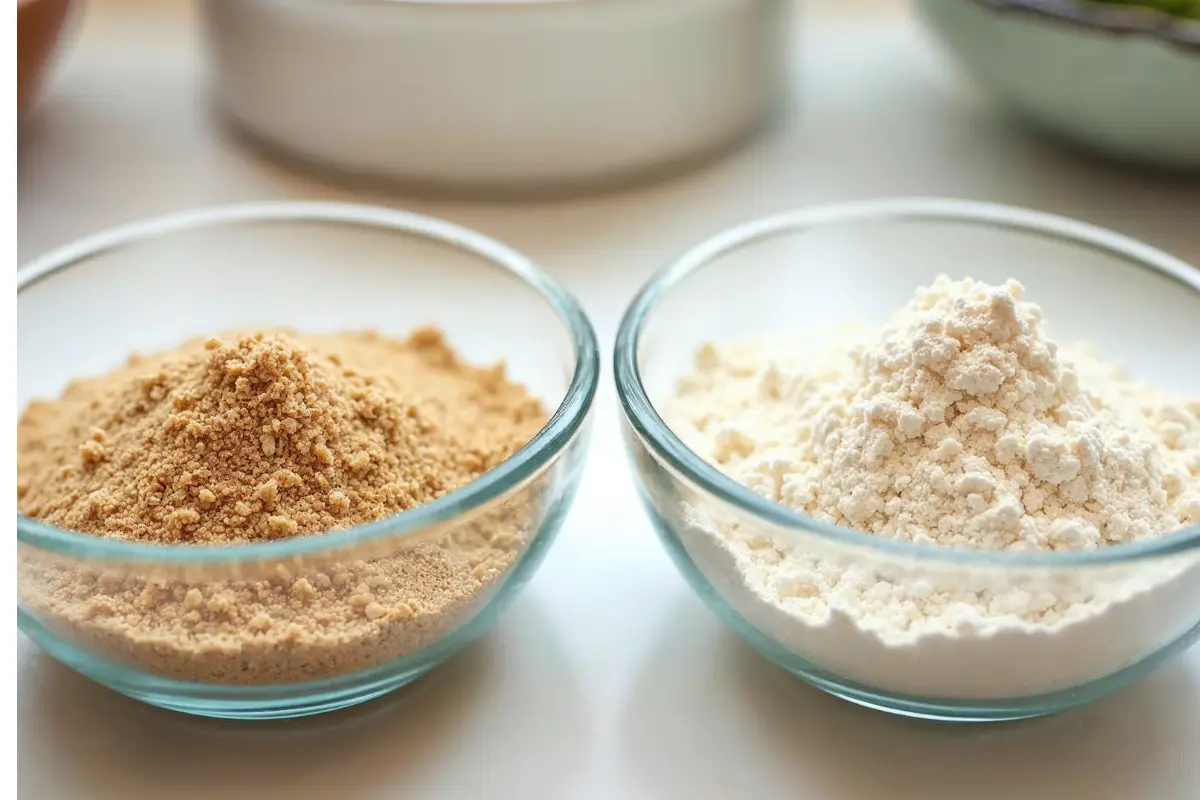
Finding truly healthy bread can be tricky due to misleading labels. Follow these tips:
- Check the Ingredient List: Look for “whole grain” or “whole wheat” as the first ingredient. Avoid breads with enriched or refined flour as the primary ingredient.
- Look at the Fiber Content: Healthy bread should have at least 3–5 grams of fiber per serving.
- Watch for Added Sugars: Many commercial breads contain added sugars to enhance flavor. Opt for those with 2 grams of sugar or less per slice.
- Monitor Sodium Levels: Choose bread with less than 150 milligrams of sodium per serving.
Best Bread Pairings for a Balanced Diet
- Breakfast: Spread avocado on Ezekiel bread and top with a poached egg for a protein-packed start to your day.
- Lunch: Use wholemeal bread for sandwiches filled with lean protein, vegetables, and hummus.
- Dinner: Pair sourdough bread with a bowl of vegetable soup or a fresh salad.
For more healthy bread ideas, check out our Wholemeal Bread Recipes.
Exploring the Healthiest Whole Grains
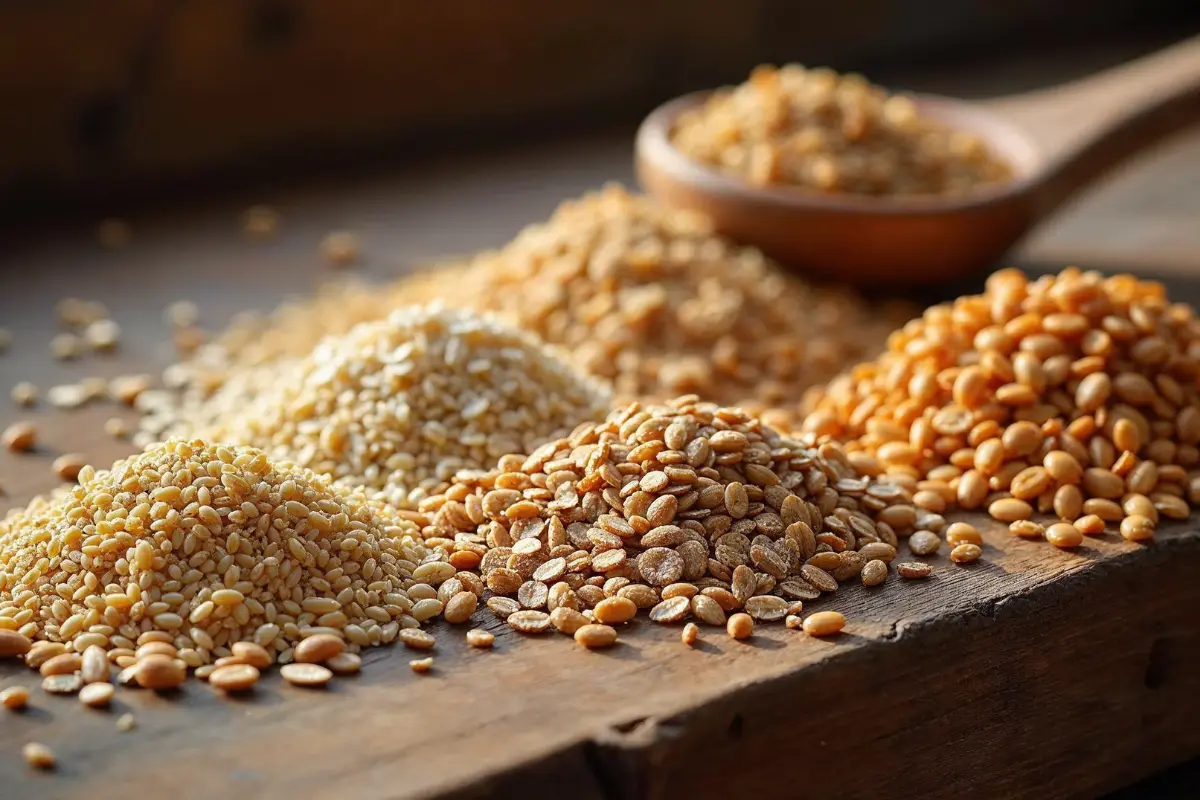
What Are Whole Grains?
Whole grains retain all parts of the grain kernel—the bran, germ, and endosperm. This makes them rich in fiber, vitamins, minerals, and antioxidants. Incorporating whole grains into your diet can improve digestion, boost energy, and reduce the risk of chronic diseases.
Top Whole Grains for Overall Health
- Quinoa:
- A complete protein, quinoa contains all nine essential amino acids.
- High in magnesium, fiber, and antioxidants, it’s ideal for people looking for a nutrient-dense alternative to rice or pasta.
- Barley:
- Packed with beta-glucans, a type of soluble fiber that reduces cholesterol and supports heart health.
- Barley is a versatile grain, perfect for soups, stews, and salads.
- Oats:
- Renowned for their cholesterol-lowering properties, oats are an excellent source of soluble fiber.
- Incorporate oats into your breakfast as oatmeal, overnight oats, or in smoothies.
- Brown Rice:
- Unlike white rice, brown rice retains its nutrient-rich bran and germ layers.
- It’s a good source of magnesium and selenium, supporting bone health and reducing inflammation.
- Millet:
- A naturally gluten-free grain, millet is rich in magnesium, promoting muscle function and energy production.
- Use it as a base for salads or in porridge.
How to Incorporate Whole Grains into Your Diet
- Start with Breakfast: Replace refined cereal with oatmeal or add cooked quinoa to a breakfast bowl.
- Switch Your Sides: Use brown rice, farro, or barley instead of white rice or pasta for lunch or dinner.
- Try Wholegrain Flour: Use wholegrain flour to bake muffins, bread, or pancakes for added nutrients.
Explore more Healthy Grain Meals to inspire your cooking.
The Role of Wholemeal in Your Diet
Health Benefits of Wholemeal Flour
Wholemeal flour offers numerous health advantages:
- Supports Digestive Health: Its high fiber content promotes regularity and prevents constipation.
- Helps Control Blood Sugar: The complex carbohydrates in wholemeal provide a slow, steady release of energy.
- Rich in Micronutrients: Contains essential vitamins like B-complex, magnesium, and iron that support energy production and overall well-being.
How to Incorporate Wholemeal Into Your Meals
- Breakfast:
- Start your day with wholemeal pancakes topped with berries and a drizzle of honey.
- Toast wholemeal bread with avocado and eggs for a protein-rich breakfast.
- Lunch:
- Use wholemeal bread for sandwiches or wraps with lean proteins and vegetables.
- Add wholemeal pita bread to salads for a crunchy, nutritious touch.
- Dinner:
- Bake homemade wholemeal pizza dough for a healthier pizza night.
- Pair wholemeal flatbreads with soups, stews, or curries.
Tips for Cooking with Wholemeal Flour
- Add slightly more liquid to doughs or batters, as wholemeal absorbs more moisture.
- Combine with other flours (like all-purpose or wholegrain) to achieve a lighter texture in baking.
For recipe inspiration, explore our Wholemeal Bread Recipes.
Common Myths About Wholemeal and Whole Wheat
Debunking Common Myths
- Myth: Wholemeal is always healthier than whole wheat.
- Truth: Both are nutritionally dense, but wholemeal has a finer texture, while whole wheat may be slightly more versatile.
- Myth: Whole wheat flour is gluten-free.
- Truth: Both wholemeal and whole wheat contain gluten unless labeled gluten-free.
- Myth: All brown bread is wholemeal or whole wheat.
- Truth: Some brown bread is dyed to appear healthy. Always check the label for “100% whole grain” or “whole wheat.”
Why These Myths Persist
Many misconceptions are due to marketing strategies and a lack of clear labeling. For instance, terms like “multigrain” or “enriched flour” may sound healthy but often refer to refined grains with added nutrients.
How to Make Informed Choices
- Always read the ingredient list and nutrition label.
- Look for terms like “100% whole grain” or “100% whole wheat.”
- Avoid products with added sugars or refined flours as primary ingredients.
By understanding the facts, you can confidently choose wholemeal and whole wheat products that align with your health goals.
FAQs
This section addresses the most frequently asked questions about wholemeal, whole wheat, and their related products. These detailed answers will help you make informed choices about your diet and recipes.
What Is the Difference Between Whole Wheat and Wholemeal?
The primary difference lies in the terminology and the milling process:
Whole Wheat: Predominantly used in the US, whole wheat refers to flour made from the entire wheat kernel, including the bran, germ, and endosperm. It can have a slightly coarser texture and is versatile in a wide range of recipes.
Wholemeal: Commonly used in the UK and Australia, wholemeal is a finely ground version of whole wheat flour. It’s often denser and produces baked goods with a robust texture and earthy flavor.
In Summary: Both wholemeal and whole wheat retain the full nutritional profile of the wheat grain, but they differ in texture and regional usage.
What Is Wholemeal Flour in the US?
meal flour in the US is referred to as whole wheat flour. The two terms are used interchangeably depending on the region. However, you might encounter variations of whole wheat flour, such as:
Graham Flour: A coarser whole wheat flour often used in crackers and rustic bread.
White Whole Wheat Flour: Made from white wheat, this variety has a milder flavor and a lighter color, making it a good option for those transitioning from refined flour.
Stone-Ground Whole Wheat Flour: This flour is milled using traditional methods, preserving more nutrients and offering a slightly coarser texture.
When following recipes that call for wholemeal flour, whole wheat flour is the best substitute.
Can You Use Wholemeal Flour Instead of Whole Wheat?
Yes, you can use wholemeal flour instead of whole wheat in most recipes, but some adjustments are necessary:
Texture Adjustments: Wholemeal flour is finer and can make baked goods denser. Adding an extra tablespoon or two of liquid to your batter or dough can improve moisture and texture.
Baking Tips: Combine wholemeal flour with lighter flours, like all-purpose or white whole wheat flour, to achieve a balanced texture.
Increase leavening agents like baking powder or yeast to help the dough rise.
Pro Tip: If you’re new to baking with wholemeal, start by substituting 50% of the whole wheat flour in a recipe with wholemeal, then gradually increase the ratio as you adapt to the flavor and texture.
What Is Healthier: Wholemeal or Wholegrain?
Both wholemeal and wholegrain are healthy choices, but their benefits vary:
Wholemeal: Provides consistent fiber and nutrients from wheat.
Ideal for those who enjoy denser baked goods like wholemeal bread or biscuits.
Wholegrain: Includes a variety of grains such as oats, barley, quinoa, and millet, each with unique nutritional benefits.
Offers more diversity in your diet and a lower glycemic index when consumed as intact grains.
Verdict: Incorporate both into your diet to enjoy a range of nutrients and textures. For example, use wholemeal flour for baking and add whole grains like quinoa or barley to salads an
What Is the Healthiest Bread You Can Eat?
he healthiest bread options are made from whole grains, with minimal added sugars and processed ingredients. Here are the top choices:
Ezekiel Bread: Made from sprouted grains and legumes, Ezekiel bread is protein-rich and nutrient-dense.
The sprouting process enhances the bioavailability of vitamins and minerals.
Sourdough Bread: Naturally fermented, sourdough bread contains probiotics that support gut health.
It’s also easier to digest and has a lower glycemic index than regular bread.
Wholemeal Bread: Dense and fiber-packed, wholemeal bread is excellent for hearty sandwiches and toasts.
Rye Bread: Made from rye flour, it’s high in fiber and has a unique, tangy flavor.
Pro Tip: Always check labels to ensure bread is labeled “100% whole grain” or “100% whole wheat” and contains at least 3 grams of fiber per serving.
Which Whole Grain Is the Healthiest?
Whole grains are all healthy, but some stand out for their unique nutritional profiles:
Quinoa: A complete protein, quinoa is ideal for vegetarians and those looking for plant-based protein sources.
High in magnesium, it supports muscle function and energy production.
Barley: Rich in beta-glucans, which lower cholesterol and improve heart health.
A versatile grain that works well in soups, salads, and risottos.
Oats: Packed with soluble fiber (beta-glucans), oats help reduce cholesterol and stabilize blood sugar levels.
Use oats for breakfast porridge or add them to smoothies and baked goods.
Farro: This ancient grain is rich in protein, fiber, and antioxidants, making it a hearty option for warm salads or grain bowls.
Pro Tip: Incorporate a mix of whole grains into your meals for balanced nutrition. Use quinoa in salads, barley in soups, and oats in breakfast bow
Conclusion
Wholemeal and whole wheat flours are both excellent for enhancing your diet with nutrient-dense, high-fiber options. Each is made from the entire wheat grain, retaining the bran, germ, and endosperm, which are vital for supporting digestion, heart health, and energy levels. While similar, understanding their differences ensures you choose the best option for your recipes and lifestyle.
Wholemeal flour, commonly used in the UK and Australia, is finely ground, creating denser, hearty baked goods like bread and muffins. Whole wheat flour, more popular in the US, has a slightly coarser texture, offering versatility for both sweet and savory dishes. Regardless of your preference, both flours are excellent sources of nutrients and add rich, nutty flavors to meals.
Expanding beyond flour, whole grains such as quinoa, oats, and barley offer even more health benefits. These grains are packed with fiber, vitamins, and minerals that promote heart health and digestion. Including a variety of whole grains in your meals, from quinoa bowls to oatmeal breakfasts, enhances both nutrition and flavor.
When choosing bread, options like Ezekiel bread, sourdough, and 100% wholemeal or wholegrain varieties deliver optimal health benefits. Look for labels that specify “100% whole grain” or “whole wheat,” and avoid options with added sugars or refined flours.
By integrating wholemeal flour and whole grains into your daily meals, you’ll enjoy wholesome, delicious foods while supporting your overall health. Whether you’re baking hearty loaves or experimenting with grain-based dishes, these choices offer endless possibilities. Start your journey today with our Wholemeal Bread Recipes and unlock the benefits of these nutritious ingredients!
Stay Connected for More Delicious Recipes!
Love trying new and exciting recipes? Don’t miss out! Follow me for daily kitchen inspiration, exclusive cooking tips, and mouthwatering food ideas.
🔹 Facebook: Follow me here
🔹 Instagram: Join me here
Let’s turn every meal into a masterpiece—one recipe at a time! Tag me when you try my dishes, and share your creations. Happy cooking! 🍓🔥 #PanoramaRecipes
Latest Posts :
- Authentic King Cake Recipe: A Festive Mardi Gras Classic
- Bake the Best Rhubarb Cake Ever – 2 Delicious Versions Inside!
- AIP Recipes: 30 Easy & Delicious Autoimmune Protocol Meals
- Fruit Salad Recipe: The Perfect Summer Treat
- Strawberry Coulis Recipe – 3-Ingredient Sauce for quick and easy Desserts
Table Of Contents
Table of Contents
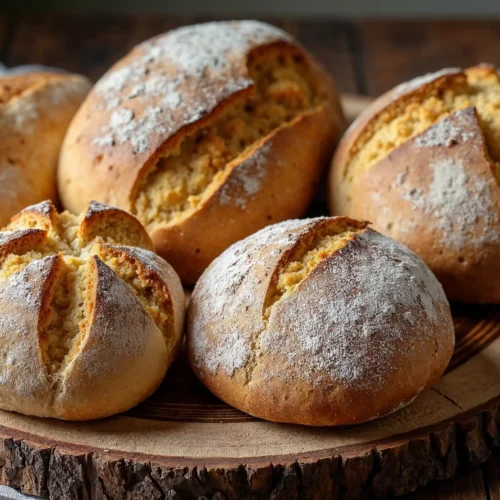
Wholemeal Bread
Equipment
- Mixing bowls
- Measuring Cups & Spoons
- Wooden Spoon or Dough Hook (for Stand Mixer)
- Floured Surface or Silicone Baking Mat
- Loaf Pan (9×5-inch)
- Kitchen Towel or Plastic Wrap
- Oven – Preheated to 375°F (190°C) for baking.
- Baking Rack – For cooling the bread after baking.
- Sharp Knife or Bread Lame (Optional)
- Pastry Brush (Optional)
Ingredients
- 3 ½ cups 450g whole wheat flour
- 1 ½ cups 360ml warm water
- 2 tbsp olive oil or melted butter
- 2 tbsp honey or maple syrup
- 2 tsp instant yeast
- 1 ½ tsp salt
- 1 tbsp flaxseeds or sunflower seeds optional, for extra texture
- Extra flour for dusting
Instructions
- Activate the Yeast: In a small bowl, mix warm water, honey, and yeast. Let it sit for 5-10 minutes until frothy.
- Mix the Dough: In a large mixing bowl, combine whole wheat flour and salt. Add the activated yeast mixture and olive oil, then mix until a rough dough forms.
- Knead the Dough: Transfer to a floured surface and knead for about 10 minutes until smooth and elastic.
- First Rise: Place the dough in a greased bowl, cover with a kitchen towel, and let it rise in a warm place for about 1-1.5 hours, or until doubled in size.
- Shape the Loaf: Punch down the dough and shape it into a loaf. Place it into a greased 9×5-inch loaf pan.
- Second Rise: Cover and let it rise again for 30-45 minutes until puffy.
- Bake: Preheat the oven to 375°F (190°C). Bake for 30-35 minutes until golden brown and sounds hollow when tapped on the bottom.
- Cool and Serve: Let the bread cool in the pan for 10 minutes, then transfer to a wire rack to cool completely before slicing.
Notes
You can add seeds (pumpkin, chia, or sunflower) for extra crunch and nutrients.
Store the bread in an airtight container at room temperature for up to 3 days or freeze for longer storage.
Best served warm with butter, jam, or honey.
Would you like variations, such as a no-yeast or quick wholemeal bread recipe? 😊

